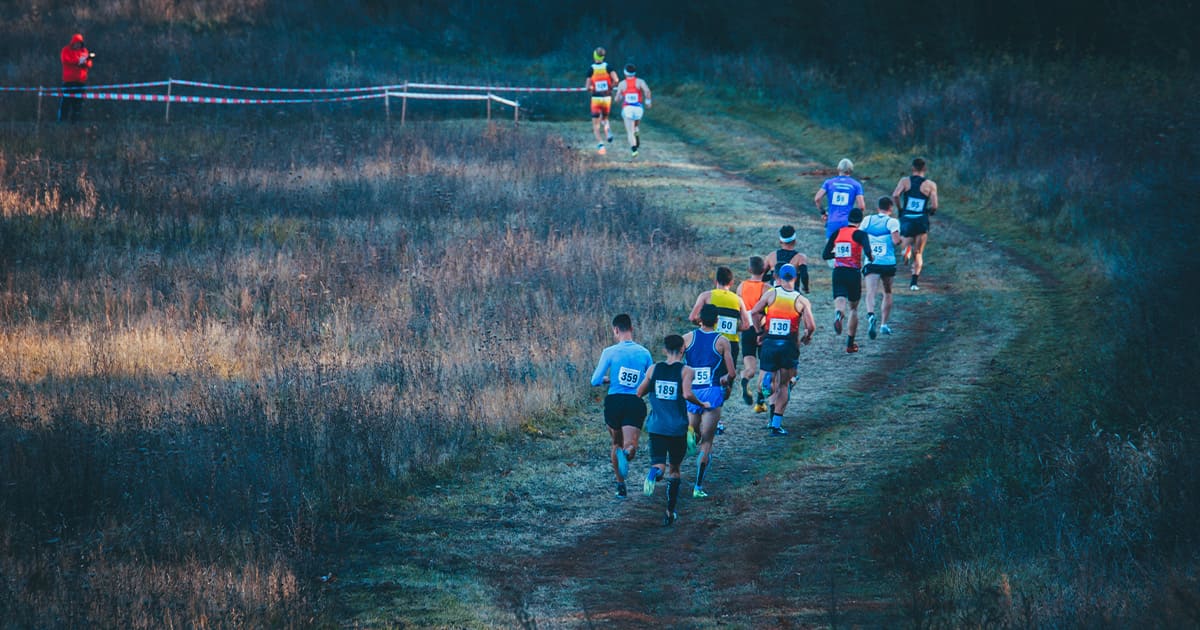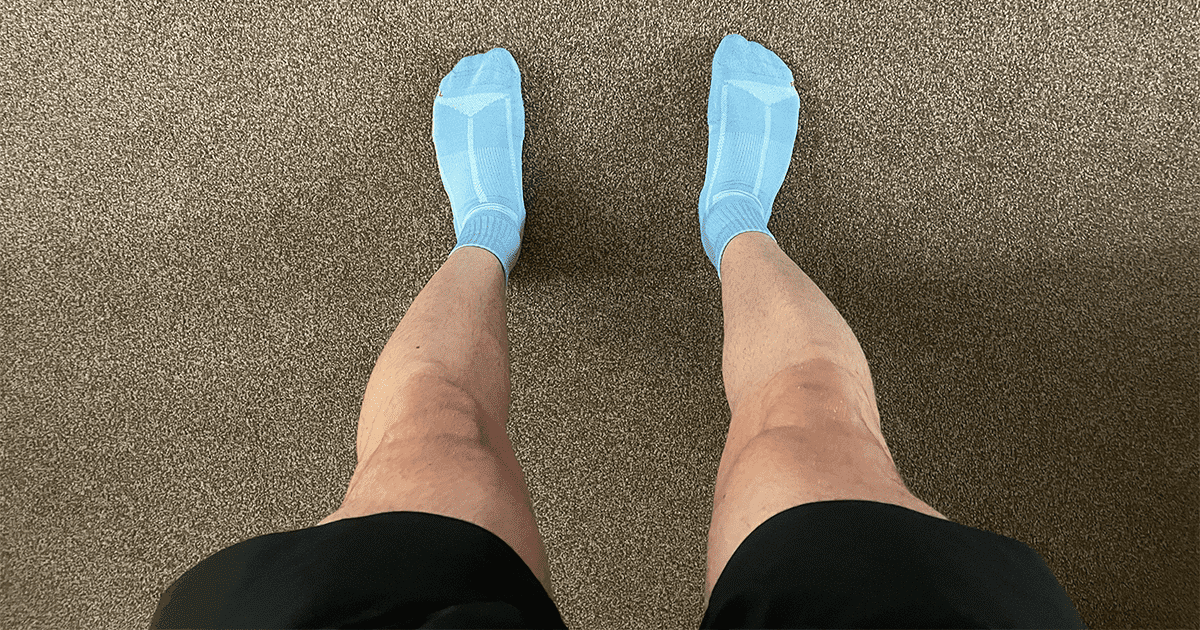How to get better at cross country running

Does running up hills, jumping through puddles, and navigating obstacles sound fun to you? If so, then cross country running is for you.
If you haven’t run cross country before, then you’re in for a treat. It’s not only fun, but it’ll help take your running to the next level.
Whether you’re preparing for your first cross country running race for school or competing at the highest level, nothing quite beats lacing up a pair of spikes and attacking those hills shoulder to shoulder with other runners.
This blog post will teach you how to get better at cross country running, covering everything you need to know including what to bring and how to train for your first event.
Related: Cross country running tips for race day.
What do you need for cross country running?
Before you go out and start training, you should invest in some new gear.
Any old pair of running shoes won’t do – you’ll need a pair of spikes or a trail shoe with deep lugs to tackle the terrain.
Proper cross country running shoes have spikes. These are not to be confused with trail shoes that can be worn on trail runs or used for going on hikes.
The difference between cross country shoes and trail shoes is that trail shoes can also be worn on paved or indoor surfaces when necessary.
On the other hand, cross country running spikes have literal spikes coming out of the soles, more closely related to track shoes, but with a longer spike.
You’ll also want to pick a spike length that will be appropriate for the type of terrain you’re going to be running on (soft vs. hard ground).
As cross country running takes place in the colder months, investing in some cold weather running gear will keep you warm during training and on race day.
We’d recommend investing in a pair of gloves, a warm pair of tights, and some merino wool socks to get started.
How to train for cross country
Once you’ve geared up, it’s time to start training.
To get better at cross country running, you’ll need to train on different terrains.
It’s a good idea to run on hills, through woods, and around other obstacles: think steppingstones to get across small streams of water, narrow bridges that can handle one person crossing at a time, or even rocks that you have to hoist yourself over with your arms.
All these obstacles can be found on a cross country course, so try your best to find them in your area.
But most importantly, you must find hills.
Hilly terrain is the most important type of surface to train on.
If you live in an area with access to trails that traverse hills, take advantage of them by running up and down, performing hill repeats.
Hill training strengthens the necessary muscles to get yourself used to the demands that hill running (and cross country) places on your body.
Don’t forget that the downhill part is just as important. It may seem easier to run downhill, but you must develop strong reflexes in your quads to help control your descent.
Also, you may choose to strength train to improve leg strength, allowing you to power up hills with less effort.
Strengthening your ankles and calves will help you turn corners quickly.
Basic strength training should be plenty, strengthening the core, back, and legs to make you a more powerful runner.
How do you create a training plan for a cross country race?
Once you’ve gotten some basic training in, focusing on various terrains, it’s time to start planning for your race.
How to train for a cross country race depends on the race itself, since no two courses are the same.
You need to study the course so that you know exactly what kind of training you need to prioritize.
If possible, try to run the course several weeks before the race so that you can anticipate the training you’ll need to do.
It may not be possible to get to the course before your race, especially if you’ve chosen a race in a far-off place and made a trip out of the event.
In that case, work with the published race materials to get an idea of the elevation gains that will happen throughout the course, as well as any clues you can pick up about tight turns or other obstacles you may encounter.
Creating your training plan will then look quite like training plans you may have seen for road races.
You’ll want to do a long run at the weekend, with a few shorter runs during the week.
Those shorter runs should focus on specific terrain goals, such as hill repeats one day, grassy or rocky surfaces the next, and so on.
Be sure to include fast efforts to simulate the race start and hill work, as it’s absolutely crucial.
Top tip: perform a track walk or scout on race day to know what to expect.
It’s all in the training
Knowing how to train for cross country is key – it’s the secret to getting better.
Be sure to include a mix of workouts and training runs, but equally, bring the right gear.
There’s nothing worse than arriving at a course with the wrong shoe, struggling for grip and throwing your race before you toe the line.
Stick with it, train hard, and most importantly, enjoy it.
Want to learn more about cross country running? Check out our guide for beginners.

Matthew is a lifelong runner, chief tester of all products, the founder of Running101, and freelance content writer for active brands. When he’s not writing, he enjoys lifting weights, cycling in the Lake District, and watching fast cars drive in circles on a Sunday. He also has a BA in sport, exercise and physical activity from the University of Durham.




